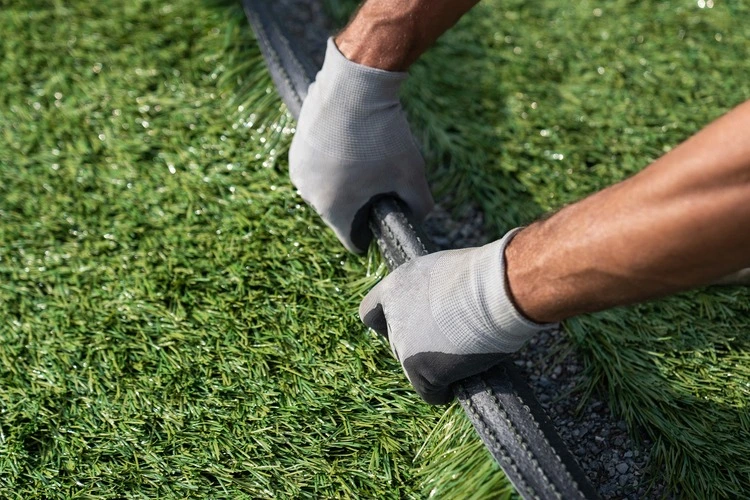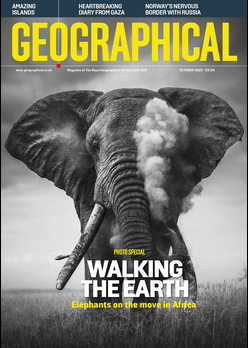


Andrew Brooks ponders on what exactly makes lawns so divisive
On a derelict triangle of land between where my road meets another, a small development of three terraced houses was recently completed.
Like many new homes in the UK, they were brick-built, conservative and lacked architectural flourish. A token effort was made to integrate the design with surrounding stone-faced Edwardian property, but this has merely emphasised the different quality of craftsmanship between the century-old masonry terrace and the quickly completed new row.
Enjoying this article? Check out our related reads:
The south-facing roofs have solar panels, but these look like an environmental afterthought rather than part of a resolved plan. Better are the small rear yards that benefit from parking places with EV charging. Yet what has most preoccupied me about these new buildings is the tiny front gardens, which are uniformly furnished with a thin carpet of artificial grass.
The phrase ‘an Englishman’s home is his castle’ – while being a gendered stereotype – is an adage that encapsulates attitudes towards property in the UK. People can do what they want within their homes and their gardens. The new neighbours are welcome to keep the fake grass.
However, there’s a further truth to this turn of phrase. The English have long emulated the look of castles, palaces and stately homes, and their expansive formal gardens, in their choice to surround their homes with smooth, green, living lawns. This park-like landscape is now so mundane and commonplace that we think it’s natural to have uniform turf grass.
Good lawns are dominated by dense, soft grasses with an absence of weeds, a rich, neat, healthy green colour and consistent length. We associate a well-maintained garden with wealth, education and implicit moral worth; good neighbours have good lawns.

A gardener must work to keep their turf grass homogeneous, occasionally using fertiliser or a sprinkler, and regularly mowing through the warmer months. The
US geographer Paul Robbins argues these regimes of grass care and discipline are so far-reaching that they produce ‘lawn people’: those who are dedicated to their garden, maintain an ecological monoculture and conform to social norms.
In contrast, a patchy lawn that has a variety of species, grass lengths and colouring is bad. The residents who have these gardens aren’t ‘lawn people’ and risk being shunned by their neighbours for letting down the community.
What makes a ‘good’ or ‘bad’ living lawn is entirely subjective. Neat and tidy bright-green baizes may be aesthetically pleasing, but are poor for species diversity and their maintenance can require a heavy environmental footprint of chemical, energy and water inputs. In contrast, a resilient multi-species overgrown mini meadow may look messy but will be much better for the local environment.
It’s relatively easy to grow a good, standard lawn in the temperate British Isles, but in other climatic regions, the cost of maintaining good lawns is far higher. Colonialism spread the model of an English lawn around the world to places including tropical parts of the southern USA, Australia and Malaysia, where lawns are commonplace in domestic and recreational settings, including the ubiquitous golf courses. Here the ecological costs of being a good lawn person are much higher.
How do artificial lawns fit into this picture? On the one hand, fake grass offers visual perfection, providing a uniform, bright-green carpet. On the other, everyone knows this has been achieved without the effort that goes in to being a ‘good lawn’ person. ‘Fake lawn’ people may be characterised as lazy, cheating or neglecting tradition. Buying a higher-quality artificial roll can ameliorate the negative connotations.
The more expensive plastic products tend to replicate some of the micro-scale imperfections of living turf grass by incorporating brown strands and subtly varying the lengths of blades to provide a closer simulation of archetypal grasses. All synthetic matting comes with a hugely negative environmental impact. Ecologically, they are irrefutably bad.

Artificial lawns are divisive. Many people love them not just for their looks and low maintenance regimes, which typically only involve the occasional sweep or even vacuum to remove fallen leaves, but also as they are clean, good for kids to play on, and work well in tiny city gardens. In schools and sports grounds, they are accepted as superior to turf grass.
Despite these merits, I can’t help wishing that my neighbours would roll up the green plastic rug and replace it with something better, and this needn’t be turf grass. A garden of planters or some easy-to-look-after shrubs would be fine.
If they want to stick with a lawn, then a living, grass-free or tapestry lawn, wherein grass monoculture is replaced by a more varied community of perennial forbs – herbaceous flowering plants – would be an upgrade. Flowers in the lawn means that through the year, various patterns will emerge as the composition of colours changes giving a ‘tapestry’ effect and offering a shifting mosaic of resources for bees and other organisms. To me, that sounds like the best type of lawn.




